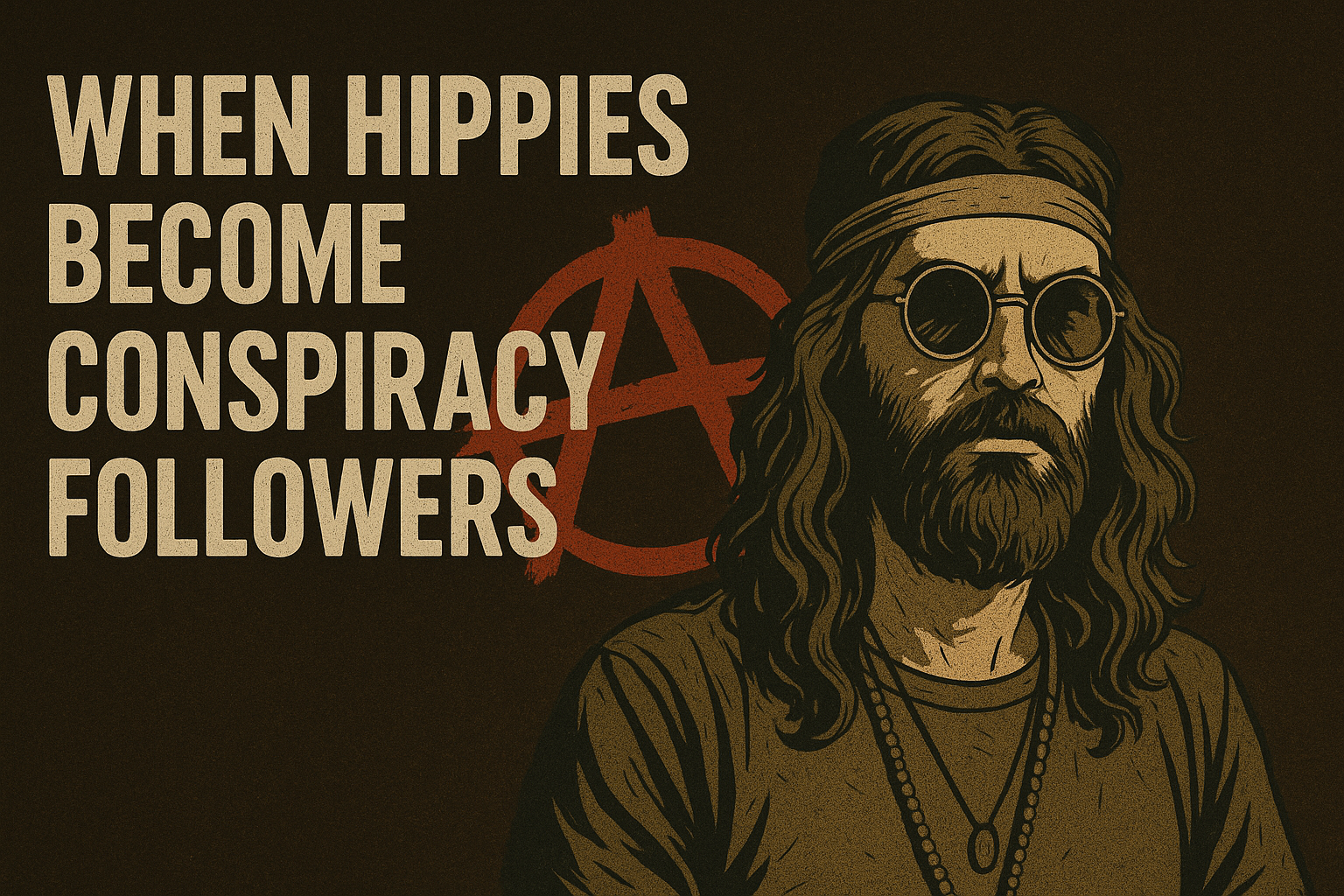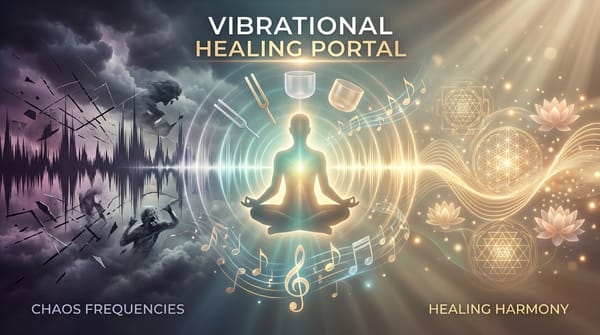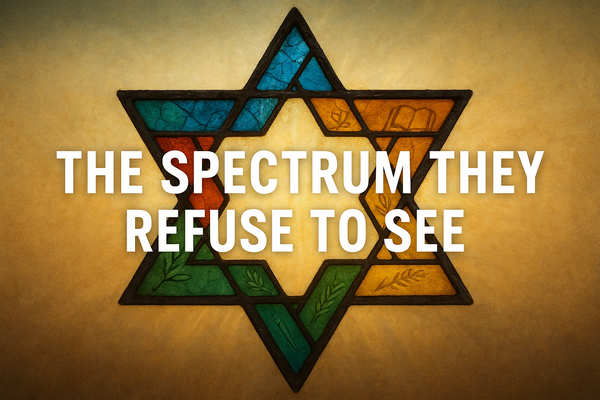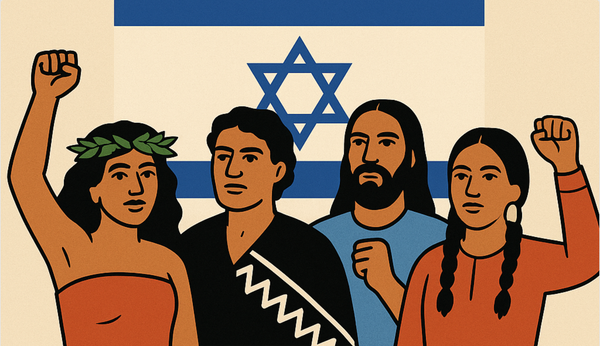How Peace-Loving Hippies Turned Into Conspiritual Warriors
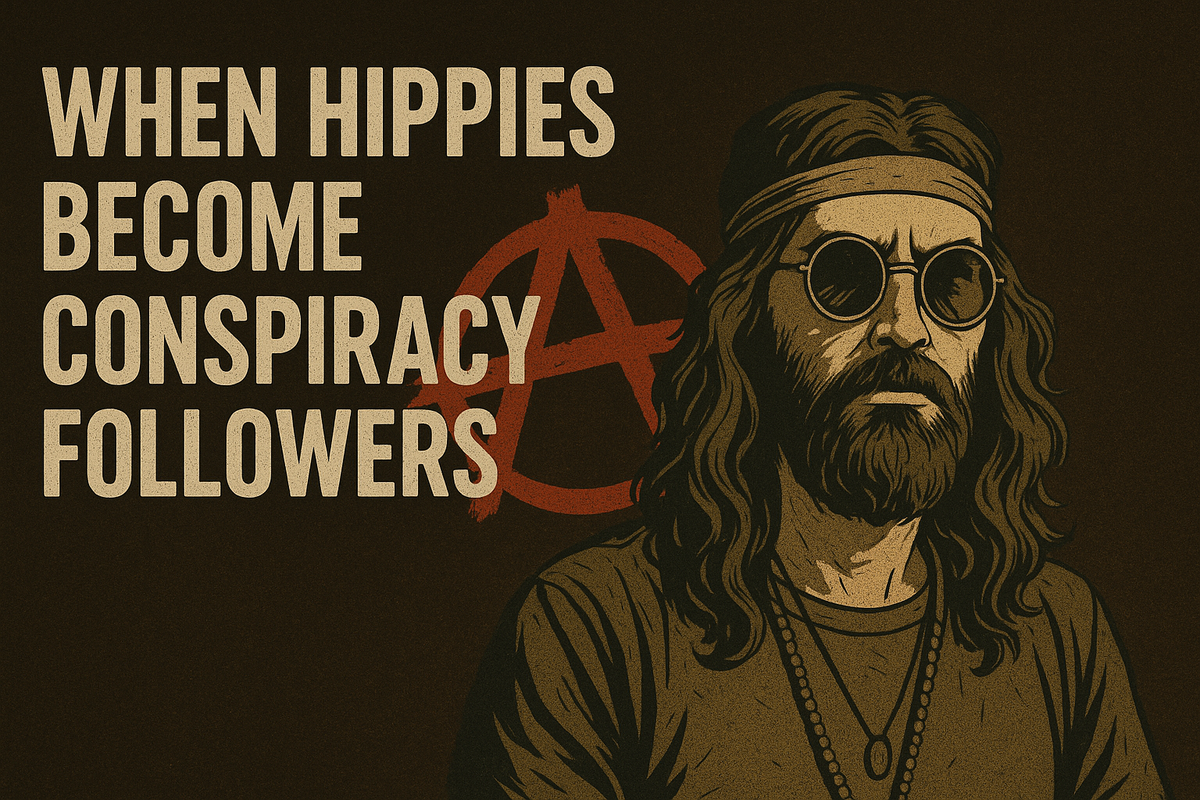
Once, the word hippie conjured images of daisies, communal living, and anti-war chants. But over decades the term has come to carry a darker weight: mistrust, conspiratorial thinking, spiritual piety with a side of judgement. This transformation didn’t happen overnight—it folded through cultural, economic and technological shifts. Below is a clear, direct account of how the arc bent.
1. The Origins: Idealism & Community (1960s)
In the 1960s the counterculture in the U.S. and beyond centred on rejecting mainstream society, embracing peace, communal living, psychedelics and Eastern religions. The ethos: live simply, love widely, question authority. (See the Youth International Party, founded in 1967, for example of theatrical activism rooted in that era.)
– The “flower power” metaphor: replacing aggression with openness.
– Spiritual exploration: yoga, meditation, Eastern faiths became popular.
– A strong anti-war, anti-establishment thread: the system was broken, we must find other ways.
At this point the movement emphasized community over competition, experience over dogma, and freedom over structure.
2. Fragmentation & Commercialization (1970s-80s)
As the 1960s idealism faded, several things shifted:
– The mainstream began absorbing the aesthetic: tie-dye, music festivals, “organic” culture. The substance often diminished.
– Communes, free-love experiments and radical collectives faced internal collapse, abuse or disillusionment. The ideal “trust everyone” model revealed its cracks.
– Spirituality shifted toward self-help, personal growth and wellness rather than collective liberation. Eastern religion practices became commodified.
– On the conspiracy side: Cold War, covert operations, cultural distrust of institutions rose. Books like None Dare Call It Conspiracy (1971) recycled older antisemitic tropes (e.g., global banker cabals) in new packaging.
In Japan and elsewhere the same pattern appeared: imported spiritual and counter-culture motifs fused with nationalist or xenophobic conspiracy thinking. (See coverage of Japanese conspiracist magazines in the 1970s).
The result: the original “hippie” model split. Some remained communicative and peaceful; others converted into spiritual consumerism or radical fringe movements.
3. Wellness + Conspiracy – The Rise of “Conspirituality” (1990s-2010s)
In recent decades a strong convergence emerged between alternative spirituality and conspiracy theory. Scholars call this phenomenon conspirituality. Key characteristics:
– Shared distrust of mainstream institutions (media, science, government).
– A metaphysical framework: “everything is connected”, “there’s more than meets the eye”.
– Use of wellness/spiritual language combined with political radicalism. E.g., yoga teachers or wellness influencers also promoting anti-vaccine ideas or “deep state” conspiracies.
For example: Wellness culture used to be about self-care and community; now parts of it claim that 5G, Big Pharma, global elites are suppressing your true self. The piece “Yoga’s Twisted History…” notes how even yoga communities became entangled in conspiracy narratives.
In Japan this crossover also manifested: spiritual seekers combined with nationalist conspiracy theories and anti-foreign sentiment.
4. The Antisemitism Overlap
One of the more dangerous undercurrents is the overlap of conspiratorial thinking with antisemitic tropes. Some key observations:
– Classic conspiracy myths (“hidden cabal controls the world”) frequently recycle antisemitic narratives (e.g., “Jewish financiers”, “globalist elite”). Scholars argue: almost all conspiracy theories are rooted in antisemitism.
– Movements like the Aum Shinrikyo cult in Japan (1990s) mixed New Age spiritual-seeking with apocalyptic conspiracies implicating Jews/Freemasons as world controllers.
– The modern wellness-conspiritual crossover is not immune: in QAnon-adjacent discourse the “globalist elite” is often code for Jewish conspirators.
Hence the journey from idealistic hippie to judgmental conspiracist also brought into view old patterns of scapegoating and bigotry. The spiritual counterculture’s suspicion of institutions morphed into suspicion of others.
5. Why This Shift Happened
Multiple forces combined:
- Loss of unified collective mission: Once the Vietnam War ended and major victories in civil rights were achieved, the counterculture lost its big external enemy. Without it, the movement splintered.
- Market absorption: The aesthetics got sold, the values diluted. Spirituality became a product.
- Technological amplification: Internet algorithms, social media echo-chambers, wellness influencers with large followings pushed more extreme and monetisable ideas. (See research on monetisation of conspiracy channels.)
- Spiritual bypassing: The turn inward (“higher self”, “inner truth”) sometimes replaced outward political accountability. When personal feeling becomes ultimate truth, accountability can erode.
- Crisis and fear: Economic insecurity, pandemics, ecological meltdown create fertile ground for conspiracies and simplistic explanations (“It’s all controlled”).
- Global adoption: This pattern didn’t remain U.S.-only. In Japan, and elsewhere in East Asia and Europe, imported spiritual and conspiratorial frameworks combined with local ideologies.
6. What It Looks Like Now
In its current form, a segment of “hippie-turned-wellness” culture manifests as:
- Wellness influencers promoting “awakenings” and simultaneously sharing anti-institution, anti-science or conspiratorial messages.
- Spiritual seekers who adopt rigid belief systems: “If you’re not awakened you’re asleep (and part of the problem)”. The turn from liberation to judgment.
- Communities that identify themselves as “free thinkers” but often frame dissenting views as proof they are “truthers”, leading to tribalism.
- Multinational networks where yoga + crystals + anti-vaccine rhetoric + QAnon memes merge.
In short: the movement that once said “question authority” now sometimes says “question authority — except me”. The values of openness and trust have inverted toward suspicion and exclusivity.
7. Reflection: What This Means for You (and Me)
If you grew up embracing the counterculture’s values of peace, community and spiritual exploration, this shift can feel like a betrayal of the original impulse. Recognizing the pattern is the first step:
- The same suspicion of institutions that once launched genuine critiques (war, racism, environmental destruction) now often fuels blanket mistrust.
- The turn to “inner truth” is powerful, but without external accountability it opens space for radicalization.
- Scapegoating remains a default human move when complexity becomes too uncomfortable; we replace nuance with someone-to-blame.
- Technology doesn’t neutralize this trend — it accelerates it.
8. Final Thought
The journey from hippie idealism to conspiritual fanaticism might look like a long arc, but its logic is consistent: reject the dominant, explore alternatives, experience truth firsthand. At first this was liberating; later it became isolating. Once the outer mission (war protest, civil rights) faded, the mission turned inward — and internal rebellions became the new battles. The danger: when rebellion becomes a closed system of “we’re awake, they’re asleep”, it becomes dogmatic, not free.
For those committed to the original spirit — community, open inquiry, mutual respect — the challenge is to hold the suspicion of power without surrendering to suspicion of people. To question authority and remain open-hearted. To explore spirituality and remain grounded in accountability. The movement didn’t have to turn cynical and conspiratorial — but parts of it did. Knowing that history equips you to steer toward the part that didn’t.
Listen to the Podcast
